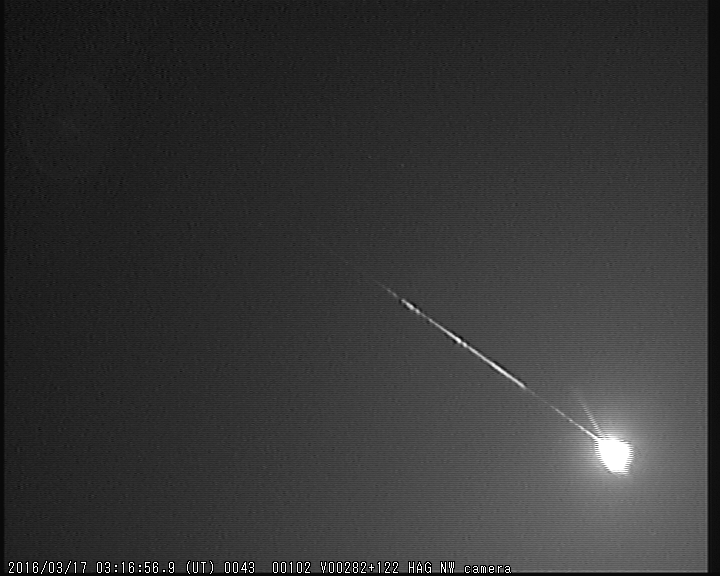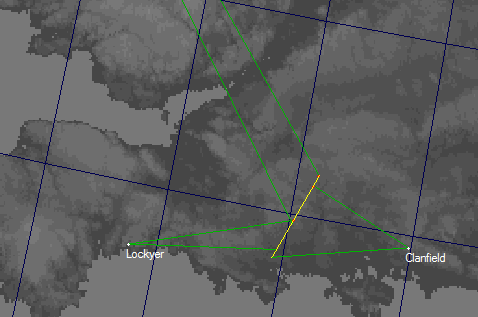2016 March 22
Fireball over Southern England on 2016 March 17
 A quarter past three in the morning – not a promising time of day for a national news event to break. But break it did and a few hardy souls on early morning delivery runs, together with a band of shift workers and insomniacs, were witness to a spectacular fireball display at 03:16:54 UT on Thursday 2016 March 17.
A quarter past three in the morning – not a promising time of day for a national news event to break. But break it did and a few hardy souls on early morning delivery runs, together with a band of shift workers and insomniacs, were witness to a spectacular fireball display at 03:16:54 UT on Thursday 2016 March 17.
The fireball entered the Earth’s atmosphere somewhere over Bournemouth and burned brightly until it faded over the Andover area. At its peak there was an explosion which has subsequently been estimated at around mag -14, and videos show a clear persistent trail.
As soon as I noticed the chatter on the internet I checked the Clanfield Observatory meteor monitoring cameras. We have three, pointing to the NW, the NE, and the SE. Experience has shown that all the bright ones creep down the edges of the video, either just in or just out of sight. Once in a while, however, you get lucky and on this day we did exactly that with our NW camera – the meteor trail beginning in the top left of the frame, and following the diagonal down to the bottom right hand corner. The first camera checked had an event at the correct time, but the integrated jpeg was a complete white out. Playing the video compounded the disappointment as we had only captured a flash, out of frame. The second camera checked had delivered. The third camera was another white out. Clearly, the mid-trail explosion had lit up the entire sky over South Hampshire.

Analysing a fireball of this magnitude is not for the faint hearted – the intensity that made it such a spectacle, burnt out the pixels on many of the video frames so standard processing in the UFO Analyser tool that both networks use, was going to be tricky. Knowing this, Richard Kacarek of UKMON gathered all the information from the UKMON stations and passed them to experts at EDMOND and the IMO who were able to process individual frames from sites in Northen Ireland, Devon and Hampshire to produce an initial analysis.
The HAG video is on YouTube: https://www.youtube.com/watch?v=hcGD0jJ9mUg
Other videos can be found on the UKMON website: http://www.ukmeteornetwork.co.uk/2016/03/huge-fireball-17-march-2016-at-316/
Credits
UKMON : United Kingdom Meteor Observation Network
NEMETODE : Network for Meteor Triangulation and Orbit Determination
EDMOND : European ViDeo Meteor Observation Network (NEMETODE and UKMON both submit their observations to EDMOND for consolidation)
HAG : Hampshire Astronomical Group
IMO : International Meteor Organisation
| The British Astronomical Association supports amateur astronomers around the UK and the rest of the world. Find out more about the BAA or join us. |
